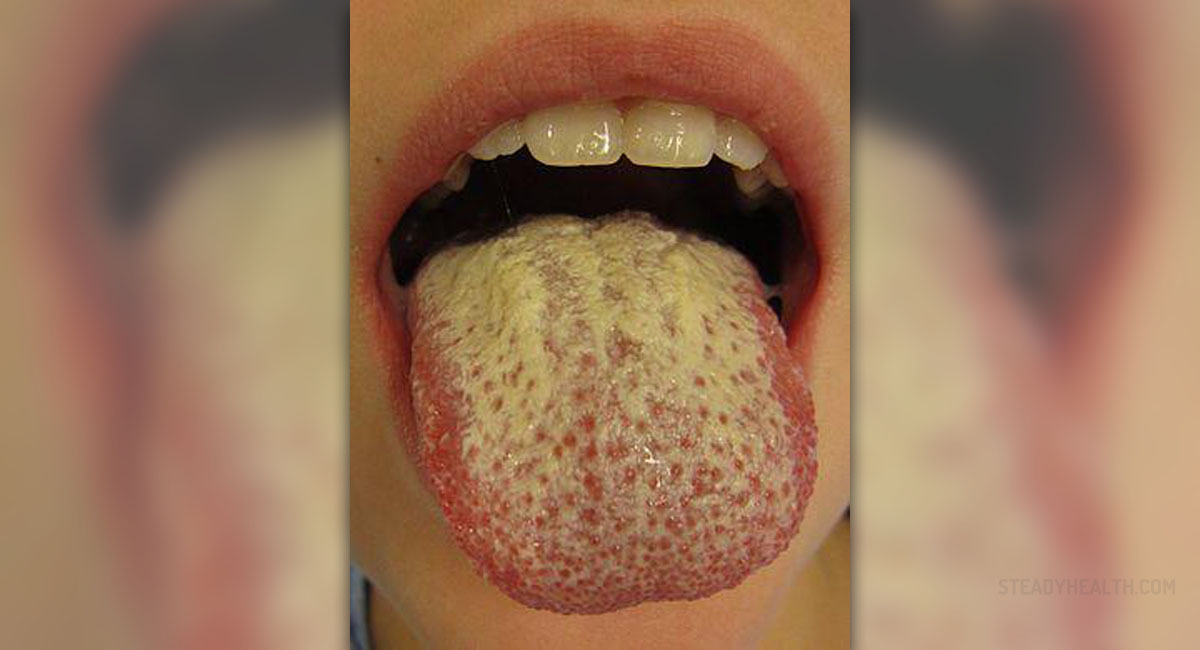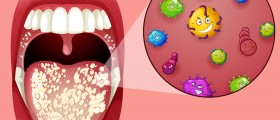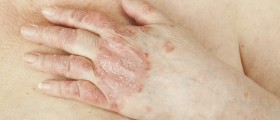
Thrush is a yeast infection caused by a particular species of yeast called Candida. Most commonly, thrush is caused by Candida Albicans, but it can also be caused by Candida glabrata or Candida tropicalis, in some rare cases. Candida albicans is a diploid fungus that normally lives on the surfaces of human tissues. However, in certain conditions, Candida albicans may overgrow and cause opportunistic oral and genital infections in humans. Human immune system normally keeps these yeasts in balance and prevents their overgrowth, but if a person suffers from diabetes or immune compromising diseases, the chances for Candida infections may dramatically increase. Candidiasis is typically observed in HIV positive patients, and it is commonly one of the first signs of the disease. It may also affect children, whose immunity is weak, and patients suffering from diabetes, since their bodily fluids contain higher levels of sugar.
Oral thrush symptoms
This condition is also known as oral candidiasis, and it is described as Candida infection affecting the mucous membranes of the mouth. This infection typically appears as thick white or cream-colored deposits on the tongue and mucus membranes. The tissues typically appear inflamed and sometimes even slightly raised. Patients may complain about pain, discomfort and burning sensations. What is characteristic for these lesions is that when the deposits are scraped, there is a slight bleeding and possibly a little pain.
Infant thrush symptoms
Infant thrush usually looks like a spot of milk left on the infant’s tongue that doesn’t come off so easily. Usually, the infant thrush isn’t a serious health concern in otherwise healthy babies, but it may cause a series of feeding difficulties. The infant thrush has a cottage cheese-like appearance, and when it’s scraped off it leaves an inflamed red area. These lesions may affect tongue, inner cheeks, tonsils, gums and even the roof of the mouth. The babies are typically irritable, since they feel a lot of pain coming from these lesions. The condition usually resolves in few weeks without any help, but seeking medical attention may speed up the healing process.
Genital thrush
Candida infection may also affect the genital parts of the body. Sometimes it develops as a side effect or pregnancy, or if a person is wearing tight clothing or nylon underwear. It may also show up as a side effect of using antibiotics, or after having chemotherapy. Some diseases such as diabetes and HIV can also affect the immune system, affecting the Candida levels in the body. In many cases, genital thrush is caused by using the harsh self-care products that disturb the normal genital flora. Thrush can occasionally be passed in sex, by fingers during foreplay or by sharing sex toys, or directly from one sexual partner to another. The symptoms include itching, soreness and redness around the intimate parts of the body, cottage-cheese like discharge, and pain on passing urine or during sexual intercourse. Men may also notice red patches on the penis or under the foreskin.













_f_280x120.jpg)



Your thoughts on this
Loading...